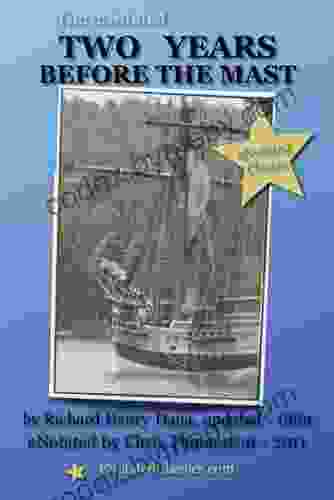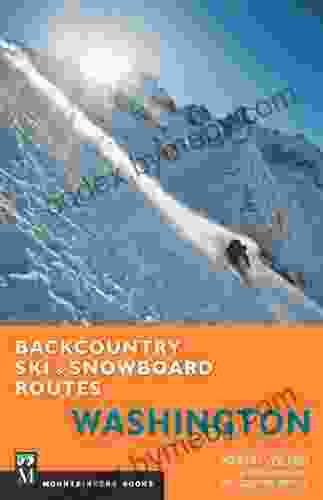Unleashing Innovation and Impact: Student Staff Partnerships for Research

4.4 out of 5
| Language | : | English |
| File size | : | 3566 KB |
| Text-to-Speech | : | Enabled |
| Screen Reader | : | Supported |
| Enhanced typesetting | : | Enabled |
| Word Wise | : | Enabled |
| Print length | : | 296 pages |
In the dynamic landscape of higher education, institutions are constantly seeking innovative ways to enhance the student experience and foster research excellence. One transformative approach that has gained momentum in recent years is the establishment of student staff partnerships for research. By partnering students with staff members, universities can unleash a wealth of untapped potential, driving research innovation and creating a ripple effect of impact that extends beyond the academic sphere.
Benefits of Student Staff Partnerships for Research
- Enhanced Student Learning: Student staff partnerships provide students with hands-on research experience, empowering them with valuable skills and knowledge that complement their theoretical coursework. Students gain practical insights into the research process, develop critical thinking and problem-solving abilities, and enhance their communication and teamwork skills.
- Increased Research Capacity: By leveraging the untapped potential of students, universities can significantly expand their research capacity. Students contribute fresh perspectives, innovative ideas, and a willingness to take calculated risks, which can help researchers overcome research challenges and accelerate the pace of discovery.
- Novel Perspectives and Innovation: Student staff partnerships foster a diverse and inclusive research environment where students' unique perspectives and experiences can enrich research projects. By incorporating student voices into the research process, institutions can gain access to new insights and perspectives that may not have been considered previously, leading to groundbreaking discoveries.
- Improved Student Retention and Success: Engaging students in research through staff partnerships contributes to their overall academic success and retention. Students who participate in research projects feel a stronger sense of connection to their institution and their field of study, which can motivate them to continue pursuing higher education and research careers.
- Enhanced Collaboration and Communication: Student staff partnerships promote interdisciplinary collaboration and foster a culture of open communication between students and staff. Through regular interactions, students gain valuable mentorship from experienced researchers, while staff members benefit from the energy and enthusiasm of students.
Best Practices for Implementing Student Staff Partnerships
To maximize the benefits of student staff partnerships, it is essential to implement them strategically and effectively. Here are some best practices to consider:
- Establish Clear Expectations: Outline the roles, responsibilities, and expectations for both students and staff members involved in the partnership. Ensure that everyone has a clear understanding of the project goals and milestones.
- Provide Training and Support: Equip students with the necessary training and support to ensure their success in the research project. This may include workshops on research methodologies, data analysis techniques, and effective communication skills.
- Foster Regular Communication: Establish regular communication channels between students and staff members to facilitate ongoing feedback, support, and troubleshooting. Use a combination of meetings, email, and online platforms to stay connected.
- Recognize and Reward Contributions: Acknowledge and celebrate the contributions made by both students and staff in the research project. Formal recognition, such as co-authorship on publications or presentations at conferences, can motivate and inspire continued collaboration.
- Evaluate and Improve: Regularly evaluate the effectiveness of the student staff partnership and make adjustments as needed. Seek feedback from both students and staff members to identify areas for improvement.
Inspiring Success Stories
Numerous universities around the world have successfully implemented student staff partnerships for research, leading to groundbreaking discoveries and tangible impact. Here are a few inspiring success stories:
- University of California, Berkeley: A student staff partnership in the field of computer science developed a novel algorithm that significantly improved the efficiency of network routing. The algorithm was successfully implemented in a major telecommunications company, resulting in substantial cost savings and enhanced network performance.
- University of Toronto: A team of student researchers partnered with staff in the Faculty of Medicine to develop a new diagnostic tool for detecting early signs of Alzheimer's disease. The tool, which combines machine learning and neuroimaging techniques, has the potential to revolutionize the diagnosis and treatment of this devastating condition.
- Massachusetts Institute of Technology (MIT): MIT has established a robust program that pairs undergraduate students with staff scientists in various research labs. This program has fostered numerous groundbreaking innovations, including the development of a low-cost, portable diagnostic device for detecting infectious diseases in resource-limited settings.
Student staff partnerships for research are a transformative force in higher education. By harnessing the potential of students and the expertise of staff members, universities can unlock a wealth of innovation and impact. Through well-designed and implemented partnerships, students gain invaluable experience, research capacity is expanded, novel perspectives are introduced, and a culture of collaboration and communication is fostered. As universities continue to innovate in their approach to research, student staff partnerships will undoubtedly play an increasingly significant role in driving discovery and shaping the future of academia.
4.4 out of 5
| Language | : | English |
| File size | : | 3566 KB |
| Text-to-Speech | : | Enabled |
| Screen Reader | : | Supported |
| Enhanced typesetting | : | Enabled |
| Word Wise | : | Enabled |
| Print length | : | 296 pages |
Do you want to contribute by writing guest posts on this blog?
Please contact us and send us a resume of previous articles that you have written.
 Book
Book Novel
Novel Page
Page Chapter
Chapter Text
Text Story
Story Genre
Genre Reader
Reader Library
Library Paperback
Paperback E-book
E-book Magazine
Magazine Newspaper
Newspaper Paragraph
Paragraph Sentence
Sentence Bookmark
Bookmark Shelf
Shelf Glossary
Glossary Bibliography
Bibliography Foreword
Foreword Preface
Preface Synopsis
Synopsis Annotation
Annotation Footnote
Footnote Manuscript
Manuscript Scroll
Scroll Codex
Codex Tome
Tome Bestseller
Bestseller Classics
Classics Library card
Library card Narrative
Narrative Biography
Biography Autobiography
Autobiography Memoir
Memoir Reference
Reference Encyclopedia
Encyclopedia Manveen Kaur
Manveen Kaur Chris Chelios
Chris Chelios Christopher Hinz
Christopher Hinz Gina M Shaw
Gina M Shaw Marsha M Linehan
Marsha M Linehan Chris Tatted Strength Luera
Chris Tatted Strength Luera Rowena Murray
Rowena Murray D L Byrd
D L Byrd Rachel Dodman
Rachel Dodman Stephen Hunter
Stephen Hunter Christopher Everette Cenac
Christopher Everette Cenac Chris Quintana
Chris Quintana Vicki Zoradi
Vicki Zoradi Christine Dzidrums
Christine Dzidrums Clarice Brough
Clarice Brough Joseph M Mascia
Joseph M Mascia Christopher Hampton
Christopher Hampton Gabrielle Hamilton
Gabrielle Hamilton Nicholas Woodsworth
Nicholas Woodsworth Chris Belchamber
Chris Belchamber
Light bulbAdvertise smarter! Our strategic ad space ensures maximum exposure. Reserve your spot today!
 Jason HayesFollow ·7.7k
Jason HayesFollow ·7.7k Cameron ReedFollow ·18.4k
Cameron ReedFollow ·18.4k Lawrence BellFollow ·18.7k
Lawrence BellFollow ·18.7k Roy BellFollow ·15.6k
Roy BellFollow ·15.6k Levi PowellFollow ·16.7k
Levi PowellFollow ·16.7k George BellFollow ·15.8k
George BellFollow ·15.8k Thomas MannFollow ·7.6k
Thomas MannFollow ·7.6k Andy HayesFollow ·10.7k
Andy HayesFollow ·10.7k

 Rick Nelson
Rick NelsonThe Power of Positivity: 51 Motivational Quotes to...
In the tapestry of life, we encounter...

 Lee Simmons
Lee SimmonsThe Indian War of 1864: A Devastating Conflict in the...
The Indian War of 1864 was a brutal...

 Eddie Bell
Eddie BellQueen: The Unauthorized Biography: Unraveling the Secrets...
Prepare to delve into the captivating...

 Dion Reed
Dion ReedUnveiling the Imperfect Gems of Trauma and...
In the tapestry of...

 Desmond Foster
Desmond FosterThirty-Six Years in the Rockies: A Timeless Masterpiece...
A Journey Through Time and...
4.4 out of 5
| Language | : | English |
| File size | : | 3566 KB |
| Text-to-Speech | : | Enabled |
| Screen Reader | : | Supported |
| Enhanced typesetting | : | Enabled |
| Word Wise | : | Enabled |
| Print length | : | 296 pages |














